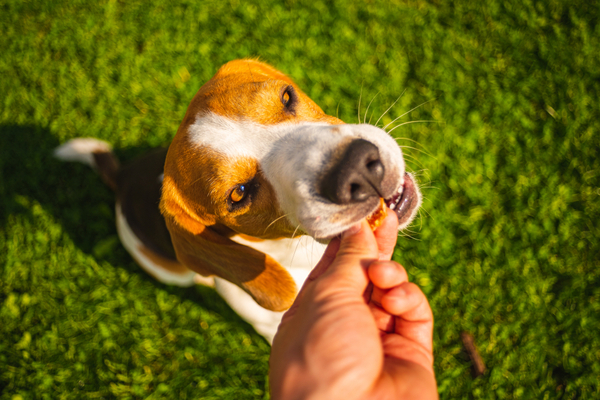February 23 is both National Dog Biscuit Day and International Dog Biscuit Appreciation Day. No one quite knows the origin of these wagtastic holidays, but we all know that dogs dearly love their crunchy treats.
According to lore, the dog biscuit was created in 1860, when an Ohio electrician named James Spratt journeyed to London to sell lightning rods. According to The New York Times, after watching quayside mongrels feasting on hardtack, the dry biscuit that fed sailors on long voyages, Spratt set about making a biscuit for dogs that could serve as their primary food.
Spratt’s Patent Meat Fibrine Dog Cakes, originally named “Maltoid” (and doesn’t that sound delicious), were a mix of grains, beetroot, vegetables and “the dried unsalted gelatinous parts of Prairie Beef,” as the company explained in an early advertisement. The biscuits were expensive — a 50-pound bag cost the equivalent of a day’s wages for a skilled craftsman — but Spratt’s target market was England’s country gentlemen, and their testimonials figured prominently in the advertisements.
By 1895, Spratt’s was established in the United States and dog biscuits were soon being described in The New York Times as “the principal food” of show dogs. But it wasn’t until 1907 that the American inventor Carleton Ellis came up with the idea of making dog biscuits in the now-iconic shape of a bone.
Ellis was also the inventor of modern-day margarine, as well as varnish and paint remover. In 1907, at the request of a slaughterhouse proprietor looking for something to do with “waste milk,” he devised the recipe for a milk-based dog biscuit. His dog, however, was unimpressed — until Ellis baked the biscuit in the shape of a bone.
“To this day,” he told Popular Science in 1936, “I cannot tell whether my dog is interested in the bone-shaped biscuit because it fools him as such, or whether, after my shaping the biscuit in an effort to cater to his taste, he feels duty-bound to fool his master by simulating an interest in it.” In 1908, bone-shaped biscuits were released by the F. H. Bennett Biscuit Company, and eventually became known as Milk-Bones.
After World War II, dog biscuits gradually transformed from dog dinner to dog dessert, treats often loaded with fat and calories. “As more Americans became prosperous consumers, dogs were beneficiaries,” says the historian Katherine C. Grier, author of “Pets in America.” The predictable result of our affluence: statistics show that more than half of all American dogs are now overweight or obese.
The moral of the biscuit story: everything in moderation.
—
Photo Credit: Przemek Iciak / Shutterstock.com
